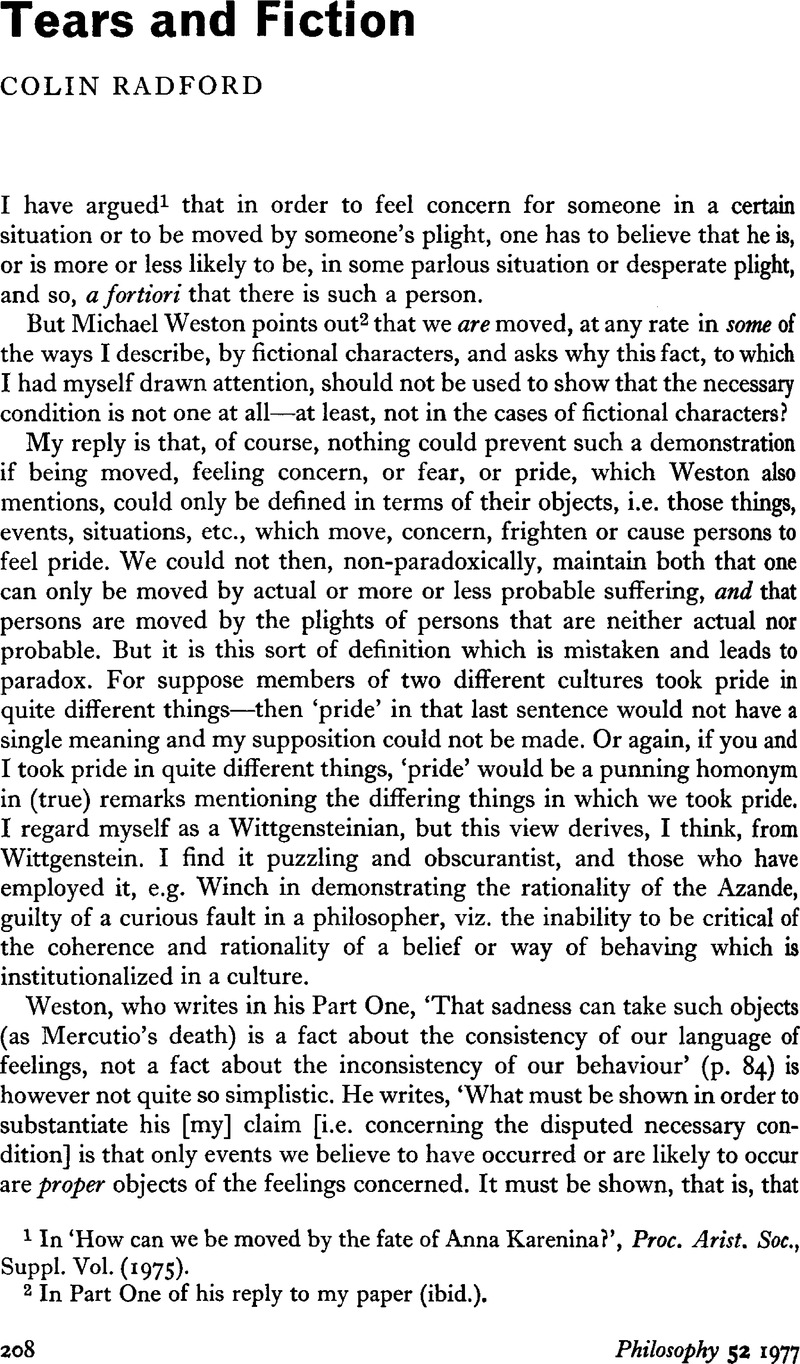Article contents
Tears and Fiction
Published online by Cambridge University Press: 30 January 2009
Abstract

- Type
- Discussion
- Information
- Copyright
- Copyright © The Royal Institute of Philosophy 1977
References
1 In ‘How can we be moved by the fate of Anna Karenina?’, Proc. Arist. Soc., Suppl. Vol. (1975).Google Scholar
2 In Part One of his reply to my paper (ibid.).
3 Though how we can feel concern for her is yet another, related, problem. She cannot really suffer because she is fictional, we cannot be harmed because the monster is fictional.
4 The fact that we cannot so distance ourselves, or it is inappropriate to do this, when the events are real (and we know this) or the work is a history (and we know this) lends support to my thesis, and does not, pace Weston, show that it is a vulgar confusion to try to throw light on our responses to fiction by comparing them with our responses to history, news, or life itself.
- 11
- Cited by


